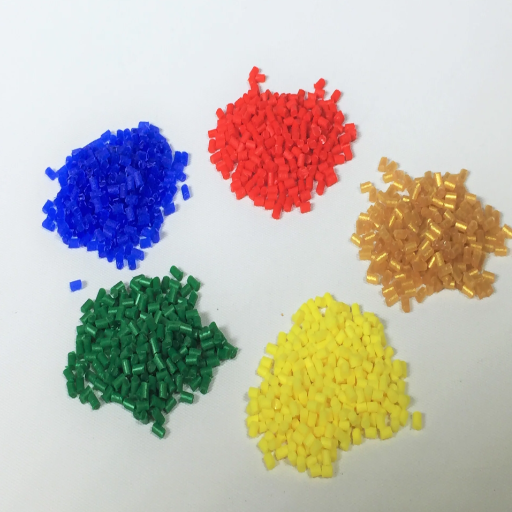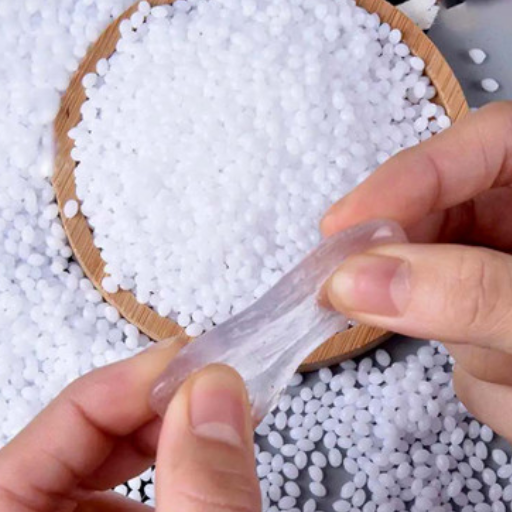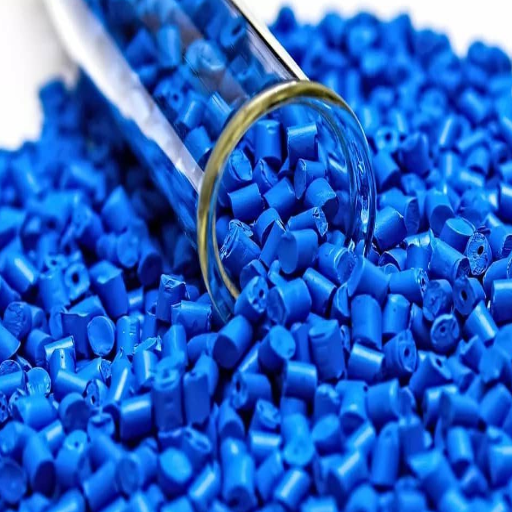PPS, or Polymer Polyphenylene Sulfide, is a polymer that has extensively made significant strides in industries with high demand. It is known for its resistance to extreme heat, superior mechanical performance, and ability to withstand corrosion. Components made from PPS can be used in automotive parts, electronics, and even industrial equipment, which are constantly subjected to intense conditions. One of the objectives of this article is to study how PPS is solving the problem of the growing need to manufacture lightweight materials that are still highly durable. In gaining insight into its features, common uses, and what the future holds for PPS, we will demonstrate how this unique polymer aids in progressing various industries.
What is Polyphenylene Sulfide (PPS), and How Does it Differ from Other Plastics?
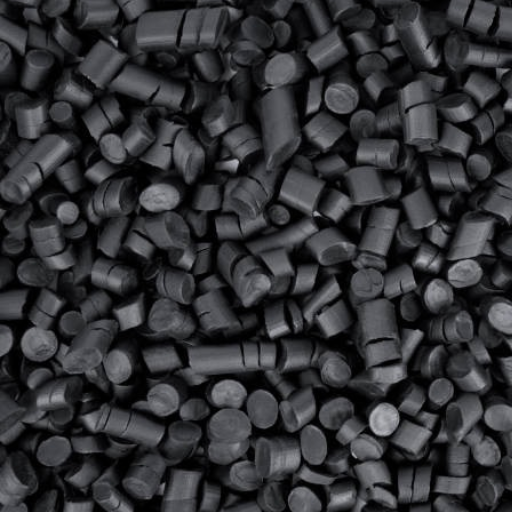
Polyphenylene Sulfide (PPS) is a type of engineering thermoplastic characterized by a high melting point and strong chemical and mechanical properties. PPS has a higher resistance to deformation than most plastics while also being able to function in high temperatures. This suggests its capacity to be helpful in adverse settings. Synthesis of PPS creates a material in which aromatic rings are elementalized with sulfur atoms. Compared to most thermoplastics, this enhances its strength considerably, which typically consists of heteroatoms such as oxygen in the ring. In normal conditions, polypropylenes may even act similarly; however, when placed in acid or extreme humidity, the performance of PPS is unmatched as it maintains structural and chemical stability. The properties make the material; thus, it is a favorite for use in the automotive, aerospace, and electronics industries, which require the material to be reliable even in harsh and extreme situations.
Defining PPS: A Unique Thermoplastic Polymer
PPS can endure extreme thermal applications up to 200 degrees Celsius in working environments while also effortlessly being placed in low-temperature ones. It is well known for its mechanical flatness, flameproofing, and even thermal desensitization. Remolds with sulfide units form a couple of PPS that exhibit high strength and tensile stability; the increase allows it to withstand deformation forces.
The mechanical properties of PPS, including high tensile strength and relatively low-stress deformability, are considerably better than those of common polymers such as polypropylene and polyethylene. Besides this, it also withstands destruction when exposed to aggressive tissues, including strong acids, bases, and solvents. These qualities and low humidity absorption render PPS an ideal material for demanding industrial uses.
PPS is widely employed in branches where precise characteristics and durability are essential. In the automotive industry, for instance, it is often named and shaped for parts such as electronic enclosures, coolant circuits, and transmission elements. The aerospace industry also uses it because of its properties in high-temperature and high-pressure environments; in the case of electronics, it is helpful for the excellent insulation components and connectors switches and printed circuit boards due to keeping the sizes. The possibilities of using PPS explain why it is still one of the most essential materials for advanced engineering.
Comparing PPS to Other High-Performance Plastics
The characteristics and properties of PPS stand out when compared with other high-performance industrial thermoplastics such as PEEK, PEI, and PTFE. Even though PEEK possesses better toughness and impact properties, it falls behind PPS in most chemically aggressive environments since PEEK is prone to corrosion. Regarding temperature, PPS would also achieve an advantage over PI in that it is more thermally stable, allowing for superior operating temperatures; however, the downside of PPS is that it lacks transparency, which would favor PI in optical or decorative applications. Although PPS may not be as good as PTFE in anti-friction and non-stick applications, it outperforms PPS in greater tensile strength and dimensional stability, allowing the use of PPS in more demanding structural applications. In conclusion, it can be said that PPS is an all-rounder plastic material that combines strength, heat resistance, and resistance to corrosive chemicals, which makes it a good candidate for engineering applications.
The Chemical Structure of Polyphenylene Sulfide
Polysulfide Polyphenylene (PPS) has a peculiar spatial arrangement of unending sections of para-phenylene rings arranged by single sulfur bonds. Its average chemical structure is denoted as [C6H4S]n, wherein n indicates the measure of polymerization. Introducing phenylene rings creates a rigid aromatic structure that enhances thermal resistance and increases chemical endurance. Meanwhile, the sulfur linkages enhance the material’s flame resistance and lessen water uptake. Such a combination of structures guarantees successful mechanical properties and dimensional stability in different temperatures and chemicals. Furthermore, because of its semi-crystalline properties, PPS remains easy to process while exhibiting excellent properties, making it suitable for high-end industrial use.
What Are the Key Properties and Advantages of PPS Material?
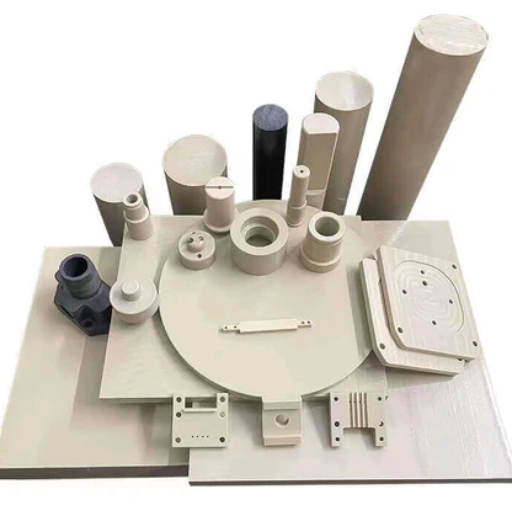
Polyphenylene sulfide (PPS) has an unusual combination of several properties, making it an ideal polymer for high-performance applications. Among other key characteristics, such as the sole rational use in temperatures up to two hundred degrees Celsius, a high degree of thermal stability is also present, for the material would not corrode when exposed to acids, alkalis, or solvents due to its chemical resistance. A layered structure of sulfur linkages in PPS endows it with inherent flame-retardant properties, which means there is no necessity for flame-retardant additives to be included in the polymer matrix. In addition, it is claimed that low water uptake will guarantee better dimensional stability, even in the presence of water or humidity showers. Apart from that, high mechanical strength and rigidity, along with good electrical insulation properties, enable the use of PPS in electrical, automotive, and industrial components. These characteristics, together with the possibility of processing and a low coefficient of friction, make it possible to manufacture high-precision parts with increased requirements.
Exceptional Chemical Resistance of PPS
Due to its high chemical and thermal resistance, polyphenylene sulfide can easily be applied in strict and harsh environments. Even at elevated temperatures, the PPS is virtually immune to harsh chemicals, including strong solvents, bases, and acid solutions. This comes from its tightly packed cross-linked polymeric network, which is all thermoset and, therefore, cannot chemically react. Besides, PPS has better stability when in contact with aggressive chemicals like hydrocarbons, oxides, or chlorinated compounds. Such exceptional chemical support gives polyphenylene sulfide wide acceptance in critical processes, such as the chemical processing of materials and parts in automotive, aerospace, and other industries that rely on polymers.
High-Temperature Resistance and Thermal Stability
PPS has been developed for various applications with high-temperature environments because of its ultra-high-temperature capabilities. This is suitable for more robust applications, as this particular polymer can endure prolonged high-temperature environments of 200-240 degrees Celsius without deteriorating. Since the polymer molecular backbone is strong, it allows for dimensional accuracy and assurance against thermal oxidation and creep, even in a continuous high-temperature environment. These requirements are practical when applied to automotive or aerospace parts that require operation in an extreme environment. The toughness factor of the material aids in thermal sustaining mechanisms, which ensures that the polymer performs adequately and reliably and possesses a long service life.
Mechanical and Electrical Properties of PPS
Polyphenylene sulfide (PPS) has good mechanical and electrical properties, making it a helpful polymer in many engineering applications. On a mechanical level, PPS is characterized by high tensile strength and a high modulus, offering high-stress levels without the risk of deformation. It also possesses a low coefficient of linear thermal expansion, allowing it to maintain its dimensions even under extreme thermal conditions. The material also has high resistance to wear and fatigue, which enhances its life span when used in strenuous operational environments.
From an electrical perspective, PPS excels as an insulator as it has a high dielectric strength and a low dielectric constant. Such characteristics prevent energy loss and guarantee the efficient operation of the systems. In addition, due to its low dissipation factor, PPS is a material of choice in high-frequency electronics and electrical insulation. Coupled with its non-requirement for active cooling and natural fire-regarding properties, these traits make PPS necessary in demanding and precise applications.
How is Polyphenylene Sulfide (PPS) Manufactured?
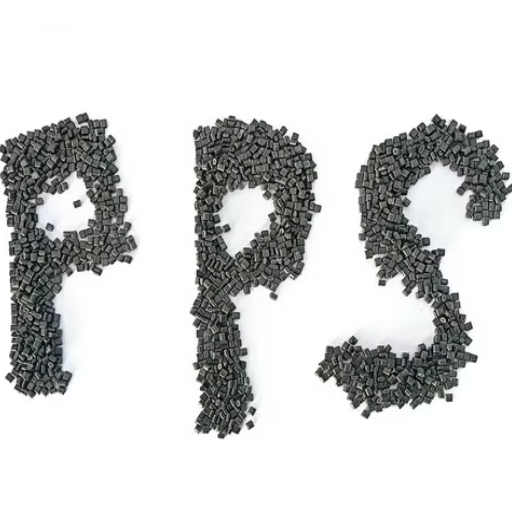
Polyphenylene sulfide (PPS) polymerizes p-dichlorobenzene (DCB) and sodium sulfide in an organic solvent. This synthesis reaction is typically carried out in a sealed reactor vessel under controlled conditions. The reaction yields polyphenylene sulfide (PPS) polymer chains and sodium chloride as a waste product. The PPS produced may be subjected to processes like crosslinking to improve its heat and mechanical strength to meet specific requirements. In such cases, additives may also enhance the material’s performance characteristics in specified applications.
The PPS Manufacturing Process: From Sodium Sulfide to Polymer
The process for making polyphenylene sulfide (PPS) starts with the making of sodium sulfide (Na₂S), which is usually made by carbon reduction of sodium sulfate (Na₂SO₄) at higher temperatures. This sodium sulfide is treated with p-dichlorobenzene (C₆H₄Cl₂) in an aprotic solvent like NMP under controlled conditions. During the process, a nucleophile replaces the leaving chloride with the polyphenylene sulfide, which contains sodium chloride (salt) as a contaminant. The molecular weight of the polymer, along with the molecular weight distribution of the polymer, is controlled by the reaction temperature, pressure, and reaction time.
After being synthesized, the polymer is filtered to remove the salt byproduct and is closely rinsed to remove any residual solvent or pollutants. Though unmodified PPS shows remarkable thermal and chemical stability, other processes, such as annealing or cross-linking, may also be applied to improve structural strength. These post-processing steps enhance its degree of crystallization, temperature dimensional stability, and increase resistance to creep under load. To widen the applications of polymer composites ranging from automotive parts to electronic devices, glass fibers, minerals, or flame retardants may also be added. This ensures a very straightforward yet precise production of a robust and multifunctional material.
Different Grades of PPS: Linear, Branched, and Crosslinked
All the available grades of PPS are well defined by their composition and architecture, which greatly influence the grade’s performance characteristics. Linear PPS can be quickly processed while maintaining high mechanical strength, making it suitable for applications requiring precision and durability. On the other hand, Branched PPS has better toughness and crack resistance, making it ideal for rugged conditions where moderate strength and flexibility are desired. Crosslinked PPS is thermally and chemically stable and is helpful in applications working under harsh conditions, high temperatures, and chemically aggressive atmospheres. It is essential to know these differences because they enable one to grade PPS based on specific requirements that a particular application may have.
PPS Compounds: Enhancing Properties Through Additives
The additives can be mixed with PPS (polyphenylene sulfide) compounds to enhance their properties and be used for different purposes in different industries. The most common additives include glass, carbon fiber, and even mineral fillers, which lend a greater mechanical strength, dimensional stability, or overall robustness. For example, glass-filled PPS compound has better resistance to creep and higher rigidity and hence is used in the structural components of the automotive and aerospace industries. However, this is not without the additions of carbon fibers, which are infused into the compound as they help bring electrical conductivity and thermal management, which are crucial for electronics and high-performance systems. Moreover, flame retardants can be integrated into PPS formulations, giving them better standards for fire safety. Lastly, lubricants such as PTFE are used to lower friction in moving operational systems. To sum up, the styling of PPS with the help of these additives guarantees a modest material promising to fulfill performance criteria and the requirements in nearly every industry.
What Are the Common Applications of PPS in Various Industries?
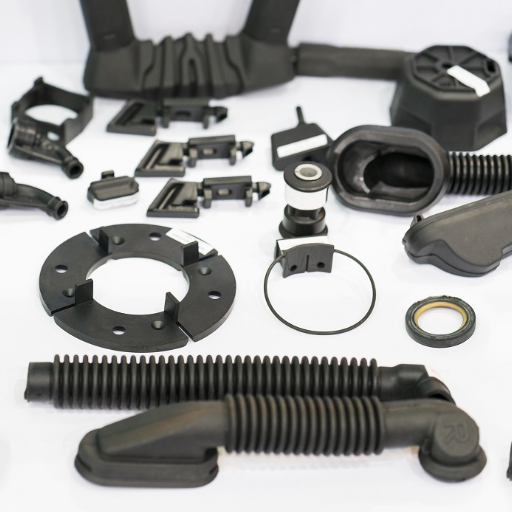
PPS is widely utilized across numerous industries due to its impressive mechanical, chemical, and thermal properties. In the automotive sector, it is used for components such as fuel system parts, sensors, and electrical connectors, where the ability to withstand high temperatures and chemicals is essential. The electronics sector utilizes the insulating qualities of PPS in plugs, switches, and other parts of circuit boards. Furthermore, it is used in parts of pumps, valves, and filter systems in the industrial field because of its dimensional stability and ability to hold out against standing coarse chemicals. Its usability can also be seen in the aerospace industry for making high-performance, lightweight components and in the healthcare sector for parts of medical devices that require sterility.
PPS in Automotive and Aerospace Industries
Polyphenylene sulfide (PPS) is significant in the automotive and aerospace industries as it is lightweight and has adequate heat and chemical resistivity and mechanical strength. In the automotive sector, PPS is frequently used in components such as fuel systems, their parts, coolant systems, and transmission parts, where high temperatures and explosive fluids are commonplace. This polymer is especially useful as it aids in reducing the curb weight of the vehicle, which in turn helps improve fuel efficiency and cut down emissions.
PPS is beneficial in the aerospace sector in creating fasteners and insulation systems for aircraft and numerous other components that must be lightweight and strong. In addition to that, it is very easy to shape and mold, which further increases its capabilities. Moreover, chemicals and extreme weather do not affect PPS, and given that it lashes PPS around harsh atmospheric conditions for optimum conditions in the aerospace area, it turns out to be a fantastic add-on for intelligent designing. Adding these properties to the list enhances the capability of PPS, which can be utilized to advance technology in the aerospace industry.
Electrical and Electronics Applications of PPS
PPS plays a crucial role in the electrical systems industry as it contains self-protecting characteristics. These characteristics, including the material’s electric and thermal properties, enable it to function under stress. For such high stresses, thermal conductivity and switches/distribution panels are critical, and PPS is widely used. Additionally, the anti-moisture properties within PPS protect the electronic circuitry, allowing it to expand further. This characteristic makes it adaptable for the development of increasingly sophisticated electronic devices.
PPS in Chemical Processing and Industrial Equipment
Polyphenylene sulfide (PPS) is becoming popular for various industrial applications, as it substantially resists extreme temperature and chemical change. It is beneficial in manufacturing pumps, valves, seals, and gaskets because it can endure strong acids, bases, and solvents. Therefore, PPS is suitable for use in aggressive processing environments. Furthermore, its remarkable features allow it to be utilized in numerous high-temperature applications, maintaining its mechanical properties and working performance in continuous working temperatures exceeding 200°C.
Moreover, PPS demonstrates an impressive ability to maintain its shape, size, and mechanical strength under varying temperatures and pressures, which is the case in most precision-engineered components. Its reduced moisture effectiveness also boosts its capability in wet or humid conditions. Riley et al. explained that businesses that utilize PPS are more likely to enjoy its durability, low maintenance requirement, and cost efficiency. Due to these properties, PPS remains one of the strongest materials suitable for rigorous chemical and industrial processes.
What Are the Processing Methods for PPS Materials?
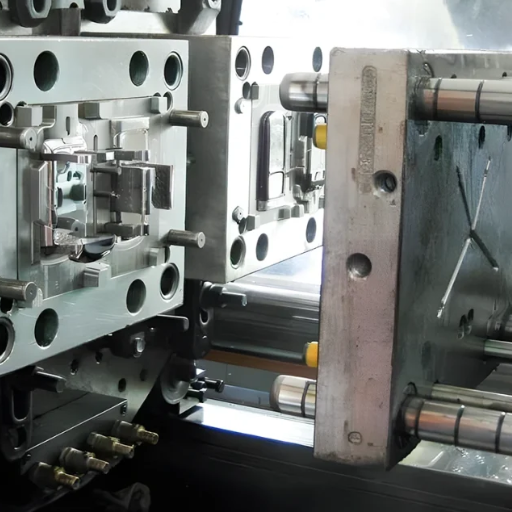
Polyphenylene sulfide (PPS) materials can be manufactured using various processes, depending on the desired application and properties. Some processing techniques include injection molding, compression molding, and extrusion. Injection molding is popular for making complex, accurate components with very low waste because it is easy to use. Compression molding is for more significant, thicker, and more rigid construction parts. Extrusion makes producing continuous properties such as profiles, film, and sheets possible using the PPS base. Such approaches usually involve pre-drying the material before use to reduce the water content of the material, thus ensuring the adequate performance of the material during the processing and in the end product.
Injection Molding and Extrusion of PPS
PPS materials are engineered thermoplastic materials with high capacities for thermoplastic vulcanizates, have the best mechanical properties and good thermal stability, and resist most chemicals. In the case of injection molding, it is crucial to maintain the temperatures within limits; for example, the temperature of the barrel can be between 315 to 343 degrees Celsius, while that of the mold would be from 74 to 135 degrees Celsius. It is essential to set the temperatures as indicated for the material to maintain a good dimensional form and make components with good tolerances. To keep voids or poor surface formations at bay, the moisture content in the material must be less than 0.02%.
This method allows for the continuous production of sheets or profiles. Still, unlike injection molding, this method allows for a higher degree of shear displacement at the flow of the flow material, in this case, structural foam. In summary, both methods achieve relatively low viscosity flows of PPS, allowing for material fusions that do not compromise PPS’s mechanical or thermal properties, making the material suitable in automotive, aerospace, and electronic fields.
Machining and Fabrication of PPS Stock Shapes
When machining and fabricating stock shapes manufactured from pps, it is essential to apply some measures to their strength and brittleness. I advise slow feed rates along with the use of high-rake angle cutting tools. Time and temperature have a strong relationship in that too much excess heat can alter dimensions or surfaces; therefore, cooling aids in that effect. After the machining is complete, particularly in bolted structures, some internal stresses can remain, and thus pci may be used for that reason. Cutting PPS stock shapes requires a detailed plan and well-designed tools.
What Future Developments Can We Expect in PPS Technology?
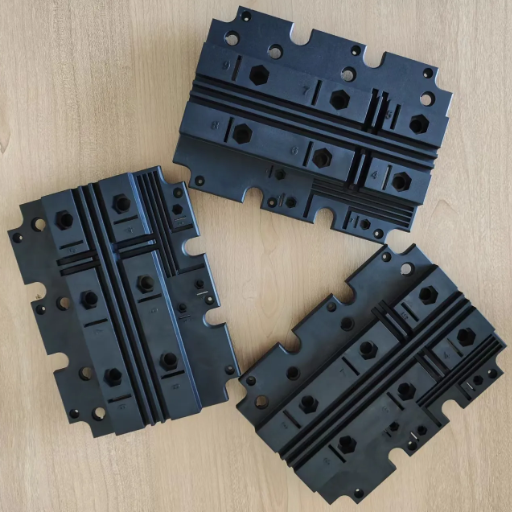
New trends associated with PPS (Polyphenylene Sulfide) technology will likely take their course to satisfy evolving industrial requirements. One significant enhancement is the introduction of PPS composites that offer better thermal and mechanical properties, facilitating its use in extreme conditions, such as in the aerospace industry or high-performance automotive parts. In addition, there is growing interest in developing new PPS formulations with lower carbon footprint and are more environmentally friendly, addressing current global sustainability challenges. Furthermore, as new and improved manufacturing methods such as injection molding and additive manufacturing become more commonplace, more reliable solutions are expected, improving efficiency in the production process while reducing the quantity of materials required. These innovations will likely increase PPS’s flexibility and prevalence in numerous high-performance sectors.
Emerging Applications for PPS in New Industries
Because of PPS’s specific characteristics, such as resistance to high temperature, chemical inertness, and mechanical solidity, several new sectors have emerged that are now adopting PPS. Electric vehicle (EV) is one such sector where PPS is gaining strength, the latest in the components of batteries, charging systems, and lightweight structural parts, which are applied to increase energy efficiency and durability. In addition, PPS is taking hold in renewable energy technologies, primarily due to the increasing application of the material in wind turbine components and solar panel frames, owing to its compatibility even in harsh environmental settings.
Auto, copier, printer, and other devices and their testing devices have significant scope in implementing polymer blending and injection molding in the future. Applications include thermo-regulable polymer for copiers and document printers, which had previously been unable to ensure sufficient strength for load-bearing parts and deal with gamma sterilization effectively. Moreover, with this addition, the aerospace industry will look into replacing sputtering with PPS to replace aircraft interiors, wiring, and composite materials with low weight, construction efficiency, and memory effects. With this advancement, new applications are emerging for PPS as it becomes more flexible.
Advancements in PPS Material Properties and Performance
Areas of research revolved around its mechanical, thermal, and chemical stability. Specific grades of ‘PIP’ have also been developed that are low viscosity, reducing their DPIM inverse Walsh variant tendency to dual cross-link type inert polymerization. Moreover, it has been discovered that adding fibers such as glass and carbon highly improves the resin’s durability and tensile strength, making aluminum more viable for aerospace and automotive mechanisms.
Enhanced flame resistance and better electrical insulation characteristics make PPS the material of choice in electronic parts such as connectors, switches, and printed circuit boards. In addition, new processing technologies, such as injection molding and 3D printing of PPS, make it possible to manufacture complex shapes with less waste and more efficient production. In conjunction with current activities aimed at increasing its recyclability, these advances highlight the strategic importance of this material in the context of high-performance and eco-friendly manufacturing.
References
Frequently Asked Questions (FAQ)
Q: What is PPS plastic, and how is it produced?
A: PPS (Polyphenylene Sulfide) is a high-performance engineering plastic known for its unique combination of properties. PPS resin is produced through the reaction of sodium sulfide with p-dichlorobenzene, resulting in a semi-crystalline polymer with exceptional thermal, mechanical, and electrical properties.
Q: What are the key properties of PPS polymer?
A: PPS’s properties include high heat resistance, excellent dimensional stability, strong mechanical properties, and superior electrical insulation. It also offers chemical resistance and low moisture absorption, making it an ideal material for demanding applications in various industries.
Q: What is the melting point of PPS, and why is it significant?
A: PPS has a melting point of approximately 280°C (536°F). This high melting point is significant because it allows PPS to maintain its mechanical and thermal properties at elevated temperatures, making it suitable for high-temperature environments and applications.
Q: What are some typical PPS applications?
A: Due to its balance of properties, PPS applications are diverse. It is widely used in the automotive, electrical, electronic, industrial, and aerospace sectors. Specific applications include electrical components, pump parts, valves, chemical processing equipment, and precision parts requiring tight tolerances.
Q: How does PPS perform in electrical applications?
A: PPS excels in electrical applications due to its outstanding electrical insulation properties. It maintains these properties over a wide range of temperatures and frequencies, making it an excellent choice for components in electrical systems, connectors, and circuit boards.
Q: What are the different types of PPS resin available?
A: There are various types of PPS resin, including linear PPS, branched PPS, and cross-linked PPS. Each type has slightly different properties and processing characteristics. Additionally, filled and unfilled PPS grades are filled with fillers such as glass fiber or minerals added to enhance specific properties for various applications.
Q: How does the processing of PPS differ from that of other plastics?
A: Due to its high melting point, PPS requires higher temperatures for processing. It can be processed using standard thermoplastic techniques such as injection molding, extrusion, and compression molding. However, special attention must be paid to drying the material before processing and using corrosion-resistant equipment due to the release of sulfur compounds during heating.
Q: What advantages does PPS offer over other engineering plastics?
A: PPS offers a unique combination of properties that differentiates it from other engineering plastics. Its high heat resistance, excellent chemical resistance, dimensional stability, and electrical insulation properties make it superior for many applications where other plastics fall short. PPS also maintains its properties over a wide temperature range, making it ideal for use in harsh environments.
Q: Can PPS be used in applications requiring flame resistance?
A: Yes, PPS has inherent flame-resistant properties. Its high limiting oxygen index and low smoke generation make it suitable for applications where flame resistance is crucial. This property, combined with its high melting point, makes PPS an excellent choice for components in aerospace and automotive industries where fire safety is a critical concern.
Q: How does the structure of PPS contribute to its properties?
A: PPS’s structure, consisting of alternating sulfur atoms and phenylene rings, contributes to its exceptional properties. This structure provides thermal stability, chemical resistance, and mechanical strength. PPS’s semi-crystalline nature also contributes to its high melting point and excellent dimensional stability, allowing it to maintain tight tolerances in various applications.

